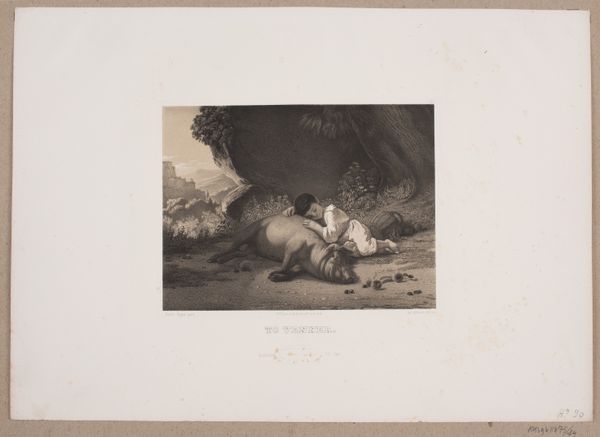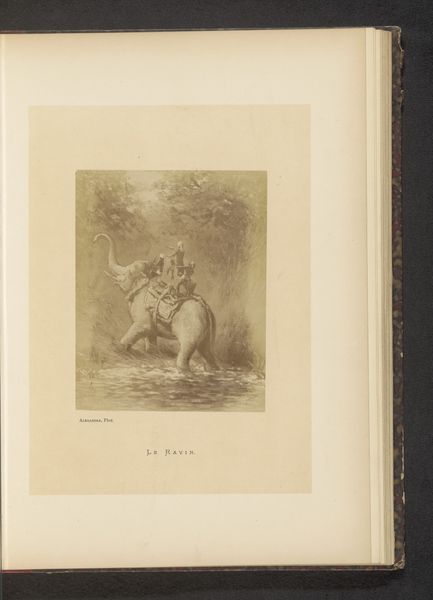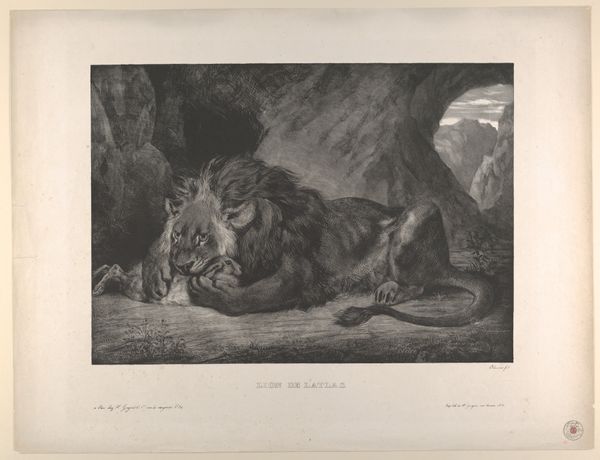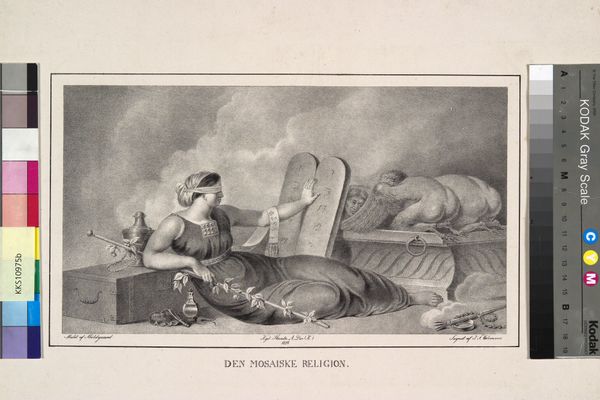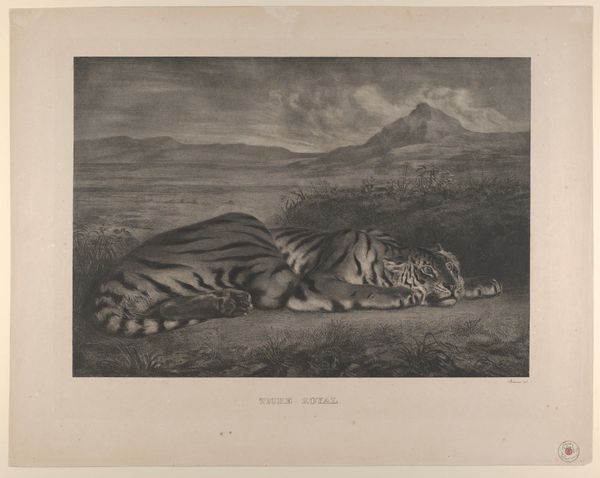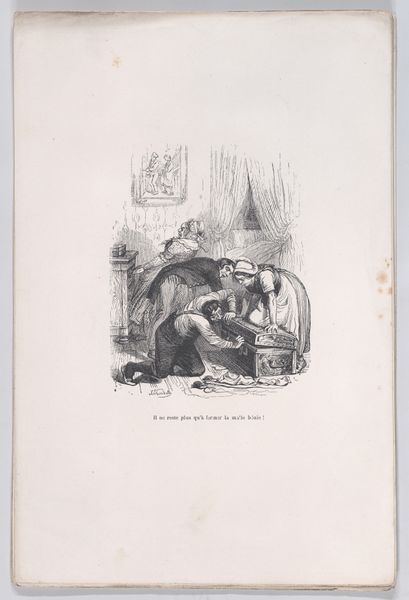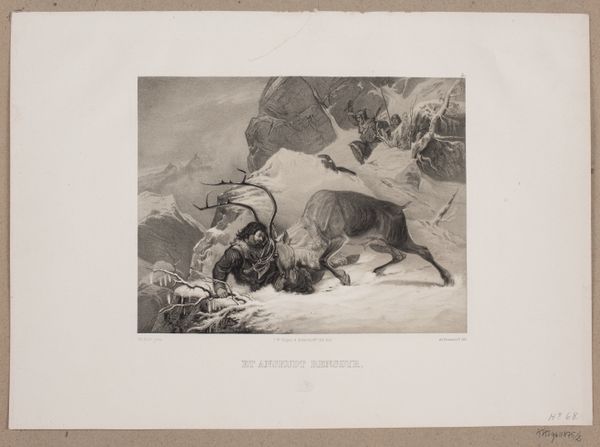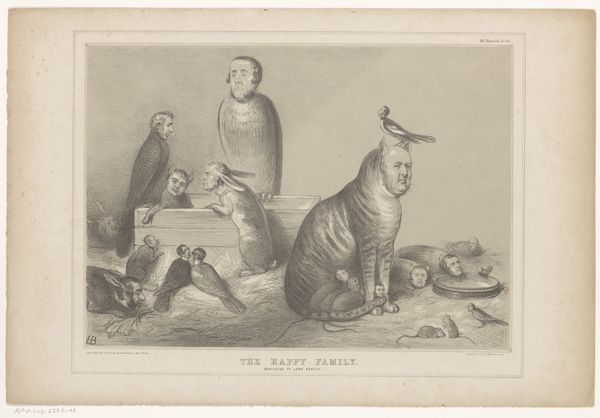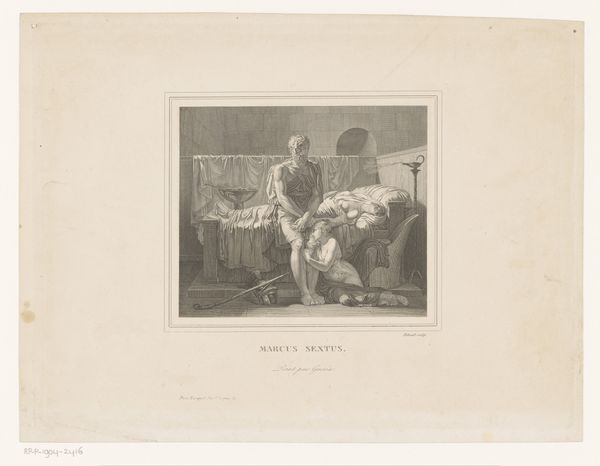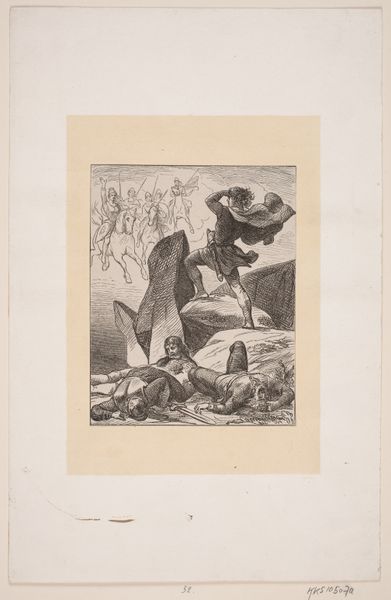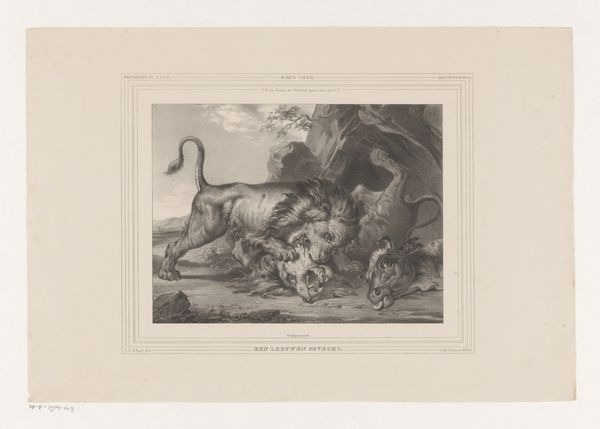
drawing, lithograph, print, paper, ink
#
portrait
#
drawing
#
neoclacissism
#
allegory
#
lithograph
# print
#
figuration
#
paper
#
ink
#
history-painting
Dimensions: 335 mm (height) x 460 mm (width) (bladmaal)
Curator: Here we have "Den mosaiske religion," a lithograph by J.F. Clemens, dating back to 1825. Editor: Okay, my first thought? Intrigued. The blindfolded figure with those stone tablets, it has a weighty, almost solemn presence about it, despite being in a softer, grey print. Curator: Indeed. Clemens has employed Neoclassical allegory here, the blindfolded figure represents the Mosaic Law. The tablets, of course, are the Ten Commandments, the very foundation. Her blindfold is key, symbolizing adherence to divine law above earthly sight. Editor: Blind faith, you mean? That's a loaded symbol, isn't it? On the one hand, it's this unwavering commitment, but on the other, it speaks to a certain inflexibility, a refusal to see from other perspectives. Curator: That tension is inherent in religious law, certainly. Consider, too, the broken scepter at her side and other abandoned and discarded items, suggesting the relinquishment of earthly power and vanities. Clemens invites us to contemplate the very essence of divine law, its relationship to worldly power and insight. Editor: There’s this little cherub burying its face in what looks like a small altar, which, next to the abandoned objects, almost feels…defeatist. If you weren't living strictly according to the commandments, what other option did you have? Repentance or eternal shame? It's harsh. Curator: Repentance would definitely be ideal here, in Neoclassical and religious contexts, but consider that cherubs typically symbolize divinity, innocence and unconditional love. That same notion should still be kept in mind with the Moses Allegory in consideration. Editor: This all brings up questions about justice, doesn’t it? About the balance between the divine and human and our all-too-fallible interpretations. What kind of guidance leads us out of darkness, and what kind keeps us in the shadows? Curator: I find it so potent how these symbols converge, making us reflect not only on ancient laws but our ever-evolving understanding of morality itself. Editor: Clemens serves up a feast for thought with an almost sparse arrangement; the print itself seems muted but not in its symbolic voice. Something old that still whispers urgently today.
Comments
No comments
Be the first to comment and join the conversation on the ultimate creative platform.

